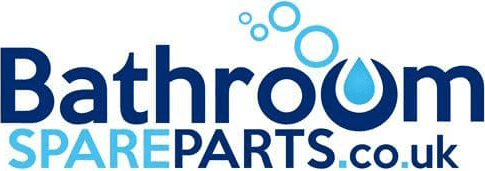
In the UK we use a wide range of designs of taps, some have separated hot and cold, others are mixers and have only one spout. In this guide we will break down the key characteristics the different most common types available on the market that you might be looking for spares for.
Common Domestic Taps
View our range of spare parts Here:
Mixer Taps - Mixer taps, also known as combination taps, are an ingenious solution where hot and cold-water
sources converge inside a single tap, resulting in a perfectly blended stream of water. These taps are
commonly found in both bathrooms and kitchens, as any tap that receives both hot and cold water is essentially a mixer tap.

Monobloc Taps - The term "monobloc tap" typically refers to a tap that consists of a single unit attached to a single hole
on a basin or sink. Monobloc taps commonly feature flexible inlet connections for the tap tail and can be operated using either a single lever or two handles.

Wall Mounted Taps - Any tap that is attached to the wall is categorized as a wall-mounted tap, suitable for both kitchen and bathroom use. These taps are connected to concealed pipework within the wall. In the bathroom, wall-mounted taps are typically mixer taps with a fixed spout, while in the kitchen, they often have a swivel spout. The installation process for concealing the pipework is more complex and time-consuming, making wall-mounted taps generally more expensive than deck-mounted taps.

Pillar Taps - Pillar taps are a pair of taps, with one dedicated to hot water and the other to cold water, each operated independently. These taps can be found in sets for basins, baths, or kitchens. Pillar taps are equipped with rigid fixed metal tails for connecting to the water supply.

Bib Taps -Bib taps are specifically kitchen taps that are mounted on the wall and usually come as a pair with fixed (non-moving) spouts. They can be seen as wall-mounted versions of pillar taps.
Commercial Use
Non concussive taps - Non concussive taps, also referred to as "percussion" taps, are timed operation taps that function for a brief duration of approximately 10-15 seconds after the depression of a button or the pushing of a lever. Typically found in schools or commercial washrooms, these taps are specifically designed to conserve water and prevent flooding.
Sensor taps - Sensor taps, as the name implies, are activated by a sensor, typically using infrared technology. These taps automatically turn on the water when your hands approach them and shut it off as soon as your hands are withdrawn. Due to their touchless nature, sensor taps are frequently employed in commercial washrooms where minimizing contact with the taps is essential for hygiene purposes.
Non concussive timer - Non concussive timer taps, on the other hand, are equipped with a sequential operation mechanism. With a single lever, these taps control both water flow and temperature. As the lever moves in a straight arc, it initially switches on the water and then progressively adjusts the temperature. Sequential taps are commonly utilized in healthcare and commercial settings.
Low Pressure versus High Pressure Taps
Low pressure taps are compatible with all types of water systems, including homes with tanks in the loft or gravity-fed water supplies. These taps do not require pumping or a Combi boiler. To enhance water flow at low pressures, low pressure taps are designed with larger waterways inside. If your water pressure falls within the range of 0.1 to 0.2 Bar, it is considered low pressure. It's important to note that if a tap is suitable for low pressure, it will perform even better in a high-pressure system.
On the other hand, high pressure taps often feature compact and modern designs or have narrower waterways. These taps require a higher water pressure to generate an adequate water stream. For instance, a tap that necessitates 1 Bar or more is suitable for pressurized systems such as pumped water supplies, Combi boilers, or mains pressure fed water systems. It's worth mentioning that taps recommended for high pressure systems will not function properly in low pressure systems.
